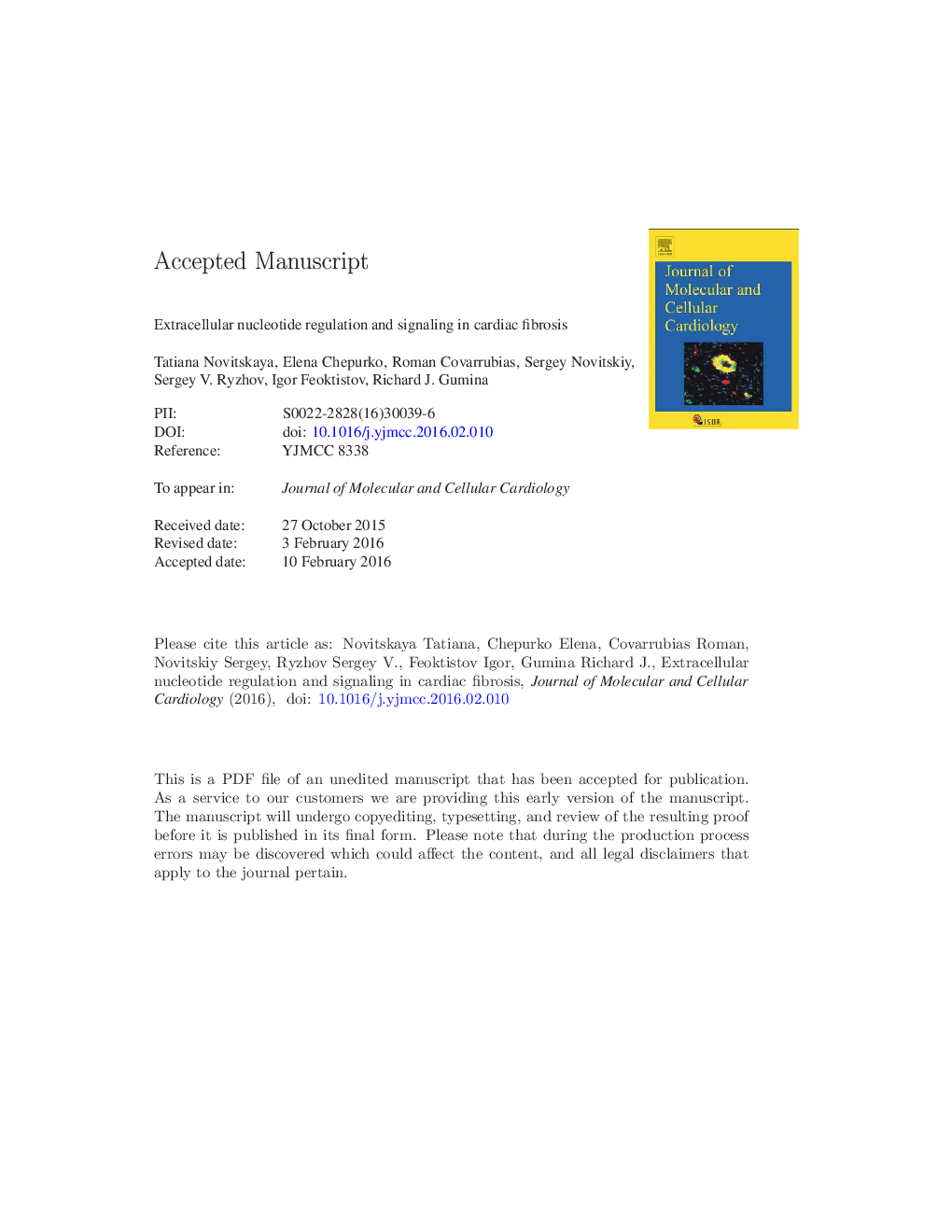| Article ID | Journal | Published Year | Pages | File Type |
|---|---|---|---|---|
| 8473866 | Journal of Molecular and Cellular Cardiology | 2016 | 47 Pages |
Abstract
Following myocardial infarction, purinergic nucleotides and nucleosides are released via non-specific and specific mechanisms in response to cellular activation, stress, or injury. These extracellular nucleotides are potent mediators of physiologic and pathologic responses, contributing to the inflammatory and fibrotic milieu within the injured myocardium. Via autocrine or paracrine signaling, cell-specific effects occur through differentially expressed purinergic receptors of the P2X, P2Y, and P1 families. Nucleotide activation of the ionotropic (ligand-gated) purine receptors (P2X) and several of the metabotropic (G-protein-coupled) purine receptors (P2Y) or adenosine activation of the P1 receptors can have profound effects on inflammatory cell function, fibroblast function, and cardiomyocyte function. Extracellular nucleotidases that hydrolyze released nucleotides regulate the magnitude and duration of purinergic signaling. While there are numerous studies on the role of the purinergic signaling pathway in cardiovascular disease, the extent to which the purinergic signaling pathway modulates cardiac fibrosis is incompletely understood. Here we provide an overview of the current understanding of how the purinergic signaling pathway modulates cardiac fibroblast function and myocardial fibrosis.
Keywords
ECMEctonucleotide pyrophosphatase/phosphodiesteraseMmpsDAMPsectonucleotidaseA2BARA2AARRanBPMA3ARA1ARGPiE-NTPDaseA2B adenosine receptorGCPRG protein-coupled receptors (GPCRs)AdenosineAdenosine TriphosphateATPalkaline phosphatasesdanger-associated molecular patternsCardiac fibrosisExtracellular matrixMatrix metalloproteinasesRan binding proteinglycophosphatidylinositolA1 adenosine receptorA2A adenosine receptorA3 adenosine receptorPurinergic receptors
Related Topics
Life Sciences
Biochemistry, Genetics and Molecular Biology
Cell Biology
Authors
Tatiana Novitskaya, Elena Chepurko, Roman Covarrubias, Sergey Novitskiy, Sergey V. Ryzhov, Igor Feoktistov, Richard J. Gumina,
